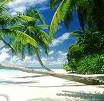 |
| Home Send Money to India Modes of money transfer India BPO India Tourism Taj Mahal Kumarakom Lakes Jaipur Pink city Alappuzha Backwaters Goa Tourism Munnar Hill Station India States Andhra Pradesh Assam Bihar Chattisgarh Goa Gujarat Haryana Himachal Pradesh Jammu and Kashmir Jharkhand Karnataka Kerala Madhya Pradesh Maharashtra Manipur Meghalaya Mizoram Nagaland Punjab Rajasthan Sikkim Tamil Nadu Orissa Tripura Uttar Pradesh Uttaranchal West Bengal India Quick Links Indiaweblinks World Wonders Web 123 Biotech Honeymoon Packages | India States - Goa  Goa is India's smallest state in terms of area and the fourth smallest in terms of population. It is located on the west coast of India, in the region known as the Konkan, and is bounded by the state of Maharashtra to the north, and Karnataka to the east and south. The Arabian Sea makes up the state's west coast. Panaji is the state's capital, and Vasco-da-Gama (Vasco) its largest town. Portuguese merchants first landed in Goa in the 16th century but soon after colonised it. The Portuguese colony existed for about 450 years, until it was annexed as part of India in 1961. Internationally renowned for its beaches, Goa is visited by hundreds of thousands of foreign and domestic tourists each year. Besides beaches, Goa is also known for its world heritage architecture including the Bom Jesus Basilica. Goa also has rich flora and fauna, owing to its location on the Western Ghats range, which are classified as a biodiversity hotspot. Goa is India's smallest state in terms of area and the fourth smallest in terms of population. It is located on the west coast of India, in the region known as the Konkan, and is bounded by the state of Maharashtra to the north, and Karnataka to the east and south. The Arabian Sea makes up the state's west coast. Panaji is the state's capital, and Vasco-da-Gama (Vasco) its largest town. Portuguese merchants first landed in Goa in the 16th century but soon after colonised it. The Portuguese colony existed for about 450 years, until it was annexed as part of India in 1961. Internationally renowned for its beaches, Goa is visited by hundreds of thousands of foreign and domestic tourists each year. Besides beaches, Goa is also known for its world heritage architecture including the Bom Jesus Basilica. Goa also has rich flora and fauna, owing to its location on the Western Ghats range, which are classified as a biodiversity hotspot. Goa History Goa has a long history stretching back to the 3rd century BC, when it formed part of the Mauryan Empire. Goa was later ruled by the Satavahanas of Kolhapur (in Maharashtra) around two thousand years ago. It eventually passed to the Chalukyas of Badami, who controlled it between 580 to 750. Over the next few centuries Goa was successively ruled by the Silharas, the Kadambas and the Chalukyans of Kalyani, rulers of Deccan India. In 1312, Goa came under the governance of the Delhi Sultanate. However the kingdom's grip on the region was weak, and by 1370 they were forced to surrender it to Harihara I of Vijayanagar. The Vijayanagar monarchs held on to the territory for the next hundred years until 1469, when it was appropriated by the Bahmani sultans of Gulbarga. After the dynasty crumbled, the area came under the hands of the Adil Shahis of Bijapur who made Velha Goa their auxiliary capital. In 1498, Vasco da Gama became the first European to set foot in India through a sea route, landing in Kozhikode in Kerala, followed by an arrival in what is now known as Old Goa. The Portuguese arrived with the intention of setting up a colony and seizing complete control of the spice trade from other European powers after traditional land routes to India were closed by the Ottoman Turks. Later, in 1510, Portuguese admiral Afonso de Albuquerque defeated the ruling Bijapur kings on behalf of a local sovereign, Timayya, leading to the establishment of a permanent settlement in Velha Goa (or Old Goa). The Portuguese intended it to be a colony and a naval base, distinct from the fortified enclaves established elsewhere along India's coasts. Ruins of Fort Aguada in north Goa; one of the defences that the Portuguese built during their reign.With the imposition of the Inquisition , many of the local residents were forcibly converted to Christianity by missionaries, threatened by punishment or confiscation of land, titles or property. Many converted, however retaining parts of their Hindu heritage. To escape the Inquisition and harassment, thousands fled the state, settling down in the neighbouring towns of Mangalore and Karwar in Karnataka. With the arrival of the other European powers in India in the 16th century, most Portuguese possessions were surrounded by the British and the Dutch. Portuguese possessions in India were a few enclaves along India's west coast, with Goa being the largest of these holdings.
Culture An interesting development of the 18th century in Goa is the Conspiracy Of The Pintos in 1787 which was inspired by the French Revolution. This was the first ethnic rebellion against Portuguese rule in Goa. Goa soon became their most important possession in India, and was granted the same civic privileges as Lisbon. The Portuguese encouraged its citizens to marry local women, and to settle in Goa. However among the local population (both Christian and Hindu) this was looked down upon. Progeny of these unions called the "mestizo" (mixed) were favourably considered by the Portuguese rulers. Subsequently, a senate was created, which maintained direct communications with the king. In 1843 the capital was moved to Panjim from Velha Goa. By mid-18th century the area under occupation had expanded to most of Goa's present day state limits. After India gained independence from the British in 1947, Portugal refused to accede to India's request to relinquish their control of its exclave. Arbitration by the United Nations General Assembly in the 1950s ruled in favour of self determination. Finally, on 1961-12-12, the Indian army moved in, uniting the colony with India. After a brief skirmish lasting for twenty-six hours, Goa, along with Daman and Diu (enclaves lying to the north of Maharashtra), was made into a federally administered Union Territory. The UN Security Council considered a resolution condemning the invasion which was vetoed by the Soviet Union. Most nations later recognised the annexation, and Portugal recognised it after its Carnation Revolution in 1974. On 1987-05-30, the Union Territory was split, and Goa was elevated as India's twenty-fifth state, with Daman and Diu remaining Union Territories.. Economy  Goa's gross state domestic product for 2004 is estimated at $3 billion in current prices. Goa is India's richest state with a GDP per capita two and a half times that of the country as a whole, and one of its fastest growth rates: 8.23% (yearly average 1990-2000). Tourism is Goa's primary industry: it handles 12%[4] of all foreign tourist arrivals in India. Goa has two main tourist seasons. Tourism is particularly focussed in the coastal areas, while its impact is more limited in the outer parts. In fact, Goa attracts tourists 365 days a year. The land away from the coast is rich in minerals and ores and mining forms the second largest industry. Mining in Goa focuses on ores of iron, bauxite, manganese, clays, limestone and silica. Agriculture, while of shrinking importance to the economy over the past four decades, offers part-time employment to a sizable portion of the populace. Rice is the main agricultural crop, followed by areca, cashew and coconut. The fishing industry provides employment for about forty thousand people, though recent official figures indicate a decline of the importance of this sector and also a fall in catch, perhaps coupled with the fact that traditional fishing has given way to large-scale mechanised trawling. Medium scale industries include the manufacturing of pesticides, fertilisers, tyres, tubes, footwear, chemicals, pharmaceuticals, wheat products, steel rolling, fruits and fish canning, cashew nuts, textiles, brewery products. Goa is also notable for its low liquor prices due to its very low excise duty on alcohol. Another source of cash inflow into the state comes from many of its citizens who work abroad and remit money to their families. Goa's gross state domestic product for 2004 is estimated at $3 billion in current prices. Goa is India's richest state with a GDP per capita two and a half times that of the country as a whole, and one of its fastest growth rates: 8.23% (yearly average 1990-2000). Tourism is Goa's primary industry: it handles 12%[4] of all foreign tourist arrivals in India. Goa has two main tourist seasons. Tourism is particularly focussed in the coastal areas, while its impact is more limited in the outer parts. In fact, Goa attracts tourists 365 days a year. The land away from the coast is rich in minerals and ores and mining forms the second largest industry. Mining in Goa focuses on ores of iron, bauxite, manganese, clays, limestone and silica. Agriculture, while of shrinking importance to the economy over the past four decades, offers part-time employment to a sizable portion of the populace. Rice is the main agricultural crop, followed by areca, cashew and coconut. The fishing industry provides employment for about forty thousand people, though recent official figures indicate a decline of the importance of this sector and also a fall in catch, perhaps coupled with the fact that traditional fishing has given way to large-scale mechanised trawling. Medium scale industries include the manufacturing of pesticides, fertilisers, tyres, tubes, footwear, chemicals, pharmaceuticals, wheat products, steel rolling, fruits and fish canning, cashew nuts, textiles, brewery products. Goa is also notable for its low liquor prices due to its very low excise duty on alcohol. Another source of cash inflow into the state comes from many of its citizens who work abroad and remit money to their families.Visit www.123goa.com - Goa Tourism Portal for more information on Goa Tourism. |
|
|
|

